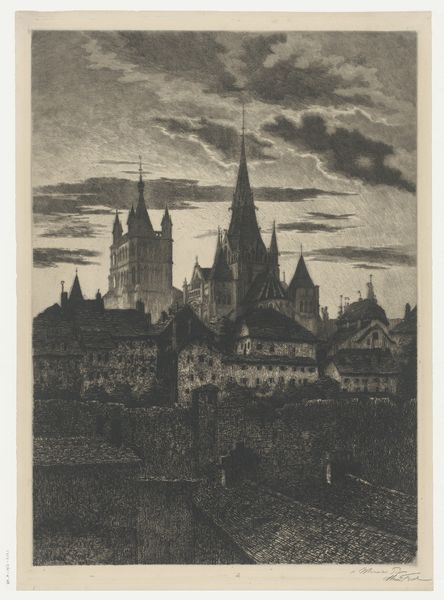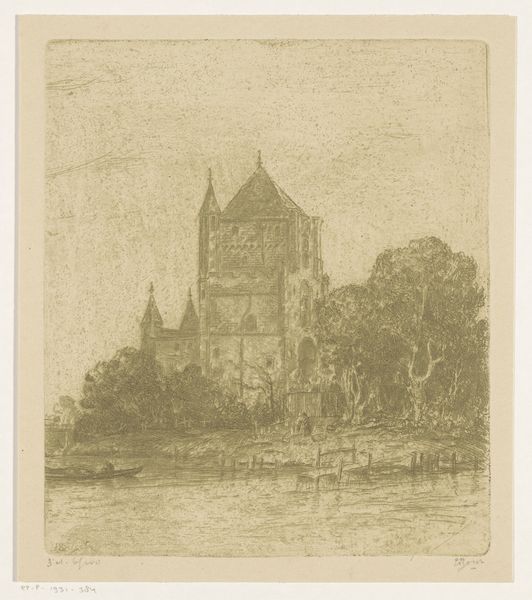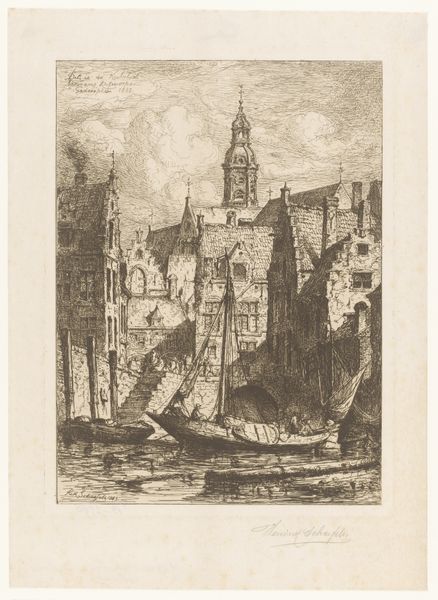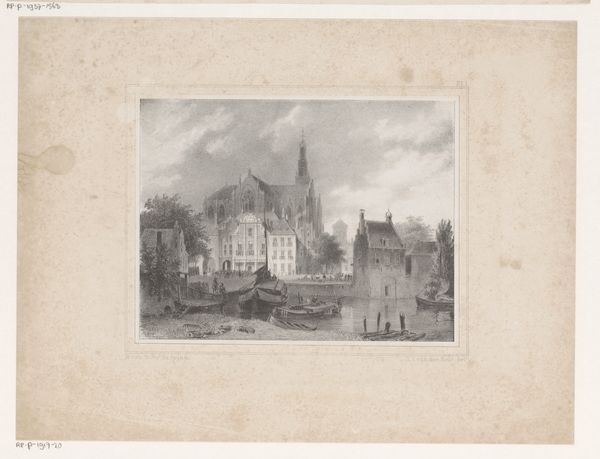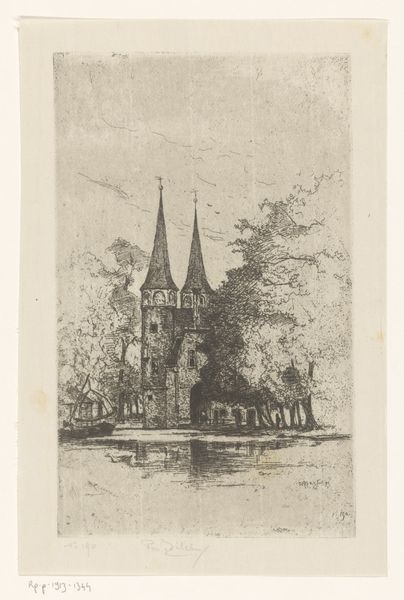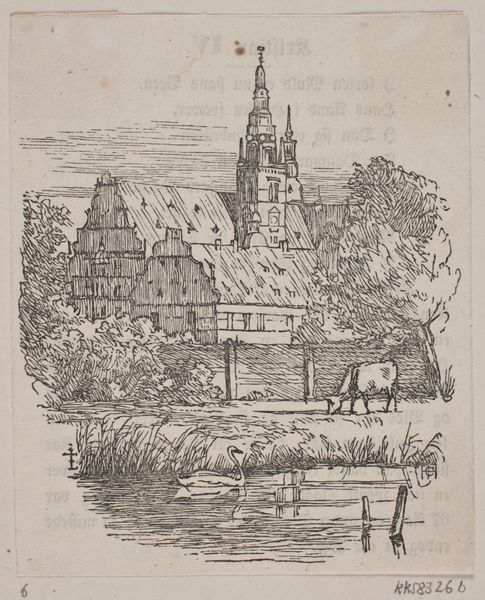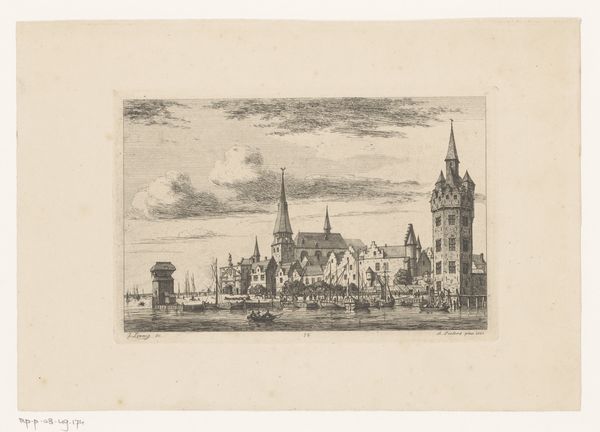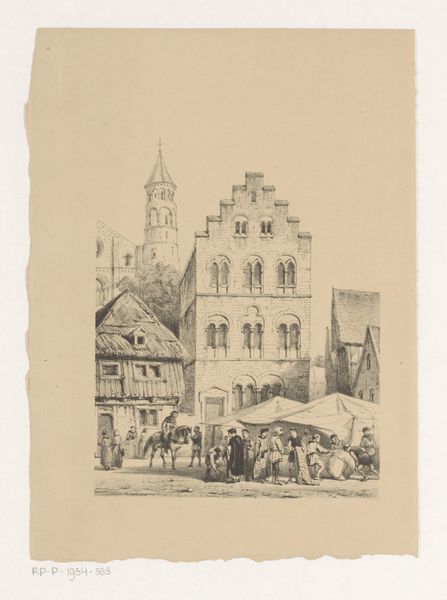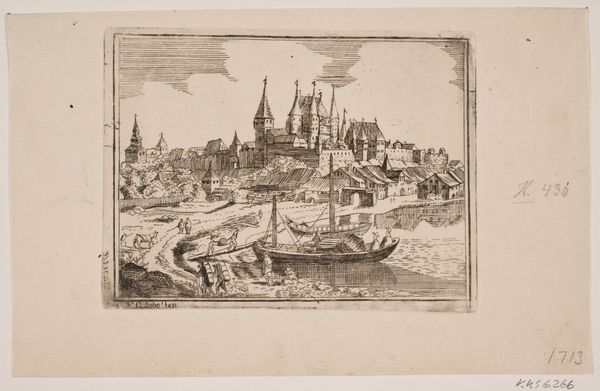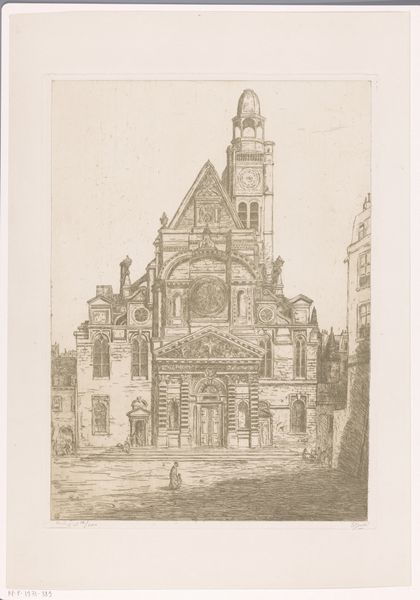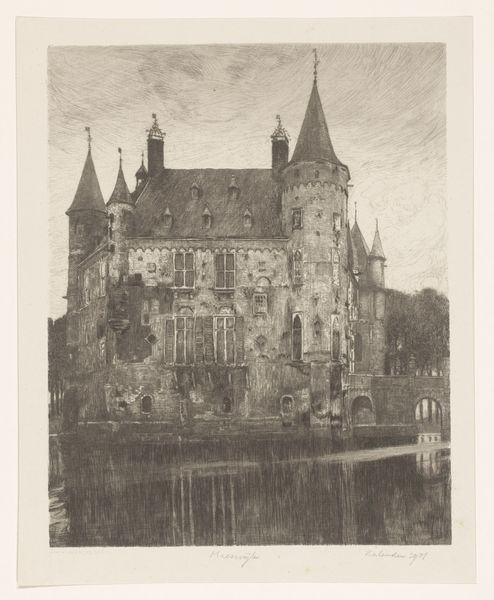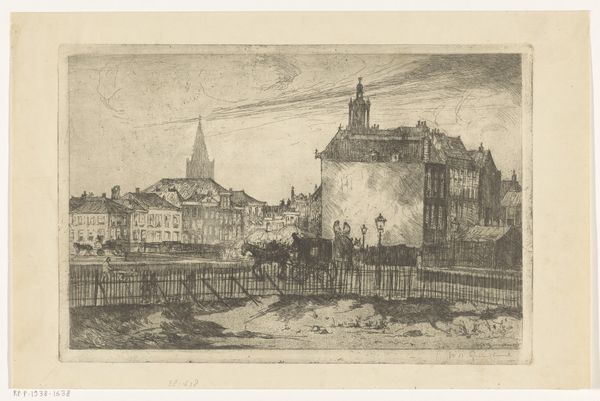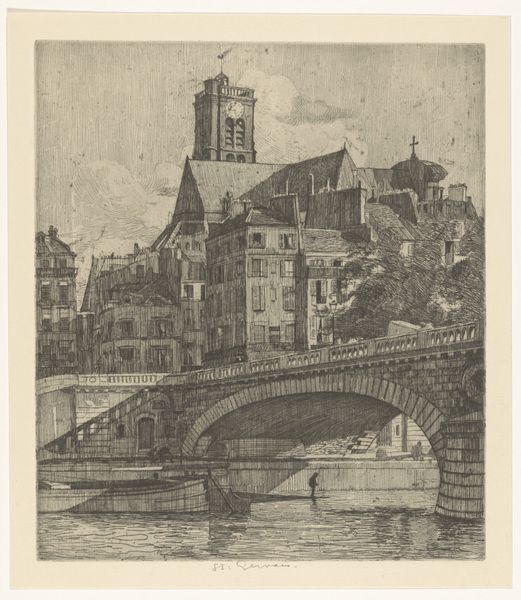
drawing, print, etching
#
drawing
# print
#
etching
#
landscape
#
etching
#
cityscape
Dimensions: height 420 mm, width 290 mm
Copyright: Rijks Museum: Open Domain
Editor: This is "Ulm," an etching by Willem Adrianus Grondhout, created between 1888 and 1934. The first thing I notice is the dominating cathedral. It has a somber, almost gothic feel. What do you see in this piece? Curator: Beyond the gothic aesthetic, consider Ulm as a site marked by centuries of power dynamics. The cathedral looms large, but what social narratives are subtly inscribed in its shadow? This was created during a period of immense urban change; do you think that’s captured? Editor: I guess I was focused on the visual impact, the technique of the etching, but you’re right, the cathedral must have a cultural importance as the setting for a particular lifestyle and politics... what's being excluded from the artist's view, what parts of the city are purposefully NOT being shown? Curator: Exactly! Think about whose stories aren't being told. Etchings, while seemingly accessible, still operated within specific circles. Does the presence of what appears to be everyday life along the water obscure underlying social divisions? Consider how class and gender are negotiated within these seemingly neutral landscapes. Is there an implied dialogue, or tension, between labor, spirituality, and urbanity? Editor: So, by focusing on what the etching *doesn't* show, we reveal the hidden ideologies of that time. This challenges the traditional view of landscape as simply pretty scenery, and forces me to examine its deeper meanings. Curator: Precisely. Analyzing "Ulm" this way invites us to interrogate art's role in both reflecting and shaping societal norms. This dialogue reveals how landscapes carry coded messages about identity, privilege, and historical context, impacting marginalized populations. Editor: I will never look at cityscapes the same way. Thank you. Curator: And I you! Let's always consider what historical conditions were necessary for something like this to be made, and for whom.
Comments
No comments
Be the first to comment and join the conversation on the ultimate creative platform.
